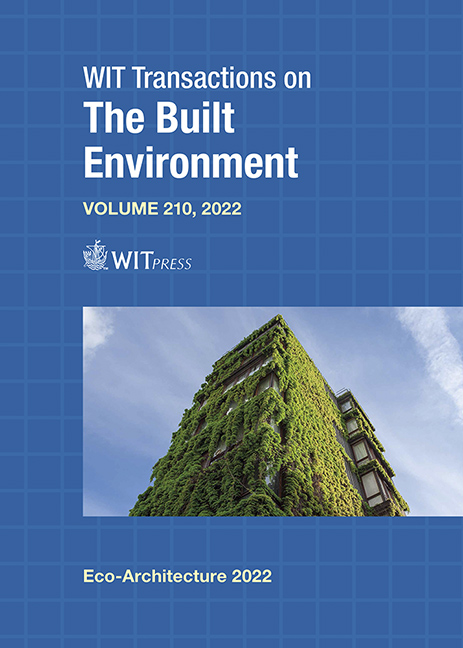DURABILITY PERFORMANCES OF COMPRESSED EARTH BLOCKS EXPOSED TO WETTING–DRYING CYCLES AND HIGH TEMPERATURE
Price
Free (open access)
Transaction
Volume
210
Pages
9
Page Range
141 - 149
Published
2022
Paper DOI
10.2495/ARC220121
Copyright
Author(s)
PHILBERT NSHIMIYIMANA, CESAIRE HEMA, SEICK OMAR SORE, OUSMANE ZOUNGRANA, ADAMAH MESSAN, LUC COURARD
Abstract
The environmental durability of earthen materials is among the main factors that limit their widespread acceptance in the contemporary building sector. This study assesses the performances of compressed earth blocks (CEBs) before and after exposure to the wetting–drying (WD) cycles and high temperature. The CEBs were produced from kaolinite-rich earth material stabilized with lime-rich residue (5%–25%) or the lime substituted with rice husk ash, lime:ash (20:0%–12:8%) or cement (4%–8%), with respect to the mass of dry earth. The CEBs were cured for 28–45 days and at the ambient temperature of a laboratory of 30±5°C and the moisture of production, necessary for the reactivity of the binders and improvement of the performances of CEBs. The CEBs were dried before testing their initial compressive strength. Their compressive strength was also tested after exposure to 12 cycles of wetting in water for 6 hours at 30±5°C and drying in the oven for 42 hours at 70±5°C. Additionally, it was tested after exposure to the elevated temperature of 150–600°C. After exposure to the WD cycles, the compressive strength of CEBs relatively increased, by up to 49% (4.6 to 6.8 MPa) for CEBs stabilized with lime (15%) and by up to 40% (4.4 to 6.2 MPa) with lime:ash (20:0%), with respect to their strength before the WD cycles. The maximum increase of the strength was observed for CEBs containing a higher amount of lime, related to the reaction of excess lime which resulted in the formation of more cementitious products and improvement of the strength of CEBs. Nevertheless, the compressive strength decreased by 55% (12.5 to 5.5 MPa) for the CEBs stabilized with cement (4%), resulting from the degradation of the initial cementitious products. However, the strength increased by up to 58% (4.2 to 6.6 MPa) for the CEBs stabilized with cement (8%) after exposure to 600°C. This implies that the stabilization of CEBs with lime-rich binder is more resilient to the WD cycles than cement. It also shows that the cement stabilized CEBs would at least retain their strength after exposure to high temperature.
Keywords
compressed earth blocks, chemical binder, compressive strength, high temperature, pozzolanic reaction, wetting–drying cycles





